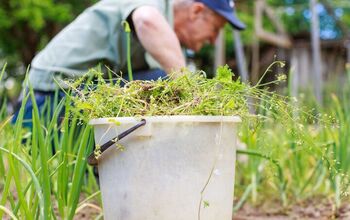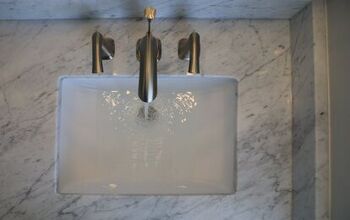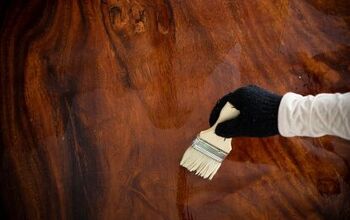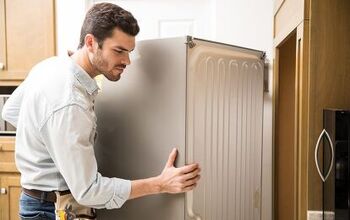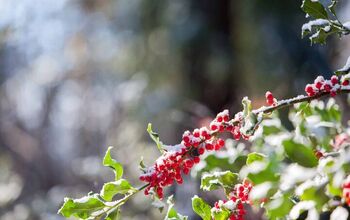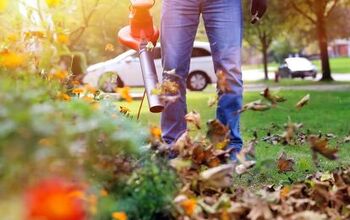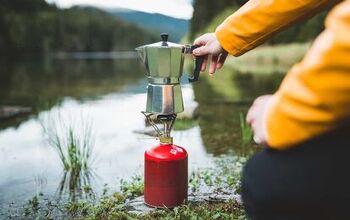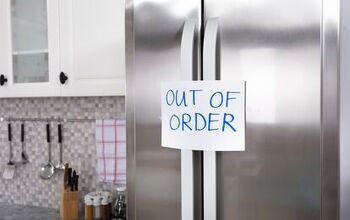Tips To Make It Easier To Water Your Garden In The Summer Heat

Summer heat waves have become common throughout the world, and these prolonged periods of hot weather make it more challenging to keep plants alive. Your garden needs plenty of water in the heat of summer, but it can be uncomfortable and dangerous to spend hours watering outside when temperatures are high.
To make watering your garden easier on hot days, try doing it in the early morning or evening, when the sun is not present and the temperatures are lower. Consider buying sprinklers or building a drip irrigation system. Add mulch to your garden to help keep your soil moist for longer. Water your plants at the base, and soak them thoroughly, so you don’t need to water daily.
Plants need water to survive, and extreme summer heat dries the soil rapidly. This means watering your garden regularly is more essential than ever. If you are sick of sweating and burning up every time you water your garden, then keep reading. Below is a list of effective ways to make watering your garden in the summer easier and safer.
13 Ways To Make Watering Easier In The Summer Heat
1. Water Plants In The Early Morning
It’s always a good idea to water in the early morning. Regardless of temperature, morning is always the best time to water your garden, as it allows more water to soak into the soil without evaporating.
Watering in the morning is also easier on your body. Temperatures are lower in the early morning. The sun is also less strong at this time of day, which makes the entire watering process more comfortable. Whenever possible, water your garden in the early morning.
2. Wait Until After Sunset To Water
If your schedule doesn’t allow you to water in the morning, the next best option is to water in the evening. Just like the morning hours, temperatures start dropping as the sun falls lower. This makes watering without the sun shining down on you less harsh on your skin and body.
Evening watering also allows the water to reach the roots before it evaporates. Remember to water at the base of the plant when watering in the evening. If you water the leaves, it can increase the chances of mold growth on the plant.
3. Build A DIY Drip Irrigation System
If you are looking for a more permanent solution to summer watering, then you can build a simple drip irrigation system. There are many different methods you can use to build a drip irrigation system.
One great way is to connect tubing (no longer than 30 feet) to your hose. Poke holes in strategic spots, and run the tubing through your garden. This allows you to soak the plants at their base without you having to stay outside for prolonged periods. There are also many easy-to-install underground sprinkler system alternatives you can try.
4. Use Sprinklers On Hot Days
If you don’t want to build an irrigation system, one simple alternative is to use sprinklers. Sprinklers can save your garden during heat waves. Use an oscillating sprinkler to cover more ground.
It’s smart to use a sprinkler in the early morning to reduce the amount of water that evaporates before soaking in. Remember to reposition the sprinkler periodically, so you water all the plants, and not just one area.
5. Use A Shade Cloth During Heat Waves
Even plants that love the sun can shrivel up and die during long summer heat waves. To give your garden a break when the forecast looks hot and sunny, consider installing a shade cloth.
You can use a standard shade cloth, mesh, burlap, or any durable sheet. Use garden poles to elevate the cloth. Providing shade will give your plants a break, and it will help keep the soil moist for longer. You can remove the shade cloth when the temperatures return to normal, or when you expect rain.
6. Don’t Water The Entire Garden At The Same Time
If you prefer watering your garden with your garden hose, then try to water your garden in sections for shorter periods. If you have a big yard, watering can take an hour or longer, which is not enjoyable on hot days.
Water one section at a time, in twenty-minute intervals. You can even water different sections on different days. This will allow you to water your garden quickly every morning, before it gets too hot. This is an ideal method for anyone who has a bigger garden and doesn't use irrigation or sprinkler systems.
7. Utilize Rainwater Whenever Possible
Summer not only brings heat and sunshine, it also brings plenty of strong rainstorms in many regions. Try to make the most of the rainwater, as these summer storms can significantly reduce your need for watering, especially if you utilize the rainwater.
You can extend your gutters and have them drain into your garden. There are also various rainwater collection methods you can use that will help you redirect this water towards your plants.
8. Give Plants A Deep Soak Rather than Light Daily Watering
In the summer, it’s smarter to take your time watering. Soak each plant thoroughly, and allow water to sink deep into the soil. This will ensure your plants have moisture they can absorb for days.
If you water quickly every day, you may think you are doing your plants a favor. In fact, it’s much better to water thoroughly every few days, as your plants will benefit more from an occasional soak than a frequent sprinkle in the summer. Giving your plants a deep soak also means you don’t have to water every day.
9. Add Mulch To Help Keep The Soil Moist
When you water your plants in the summer heat, you want to ensure the soil stays moist for as long as possible. Mulch is one of the best ways to help soil retain moisture. If you live somewhere with hot summers, mulch is a great way to make watering easier.
Mulch can reduce water evaporation by upwards of 50%. This means you can keep your plants healthy while also reducing your need to go outside and water in the summer heat.
10. Group Plants Together Based On Watering Needs
You must remember that not all plants have the same watering needs. Some plants like soil that’s always moist, while others prefer soil that gets a bit dry from time to time. One way to make watering easier in the summer is to group your plants together based on their watering needs.
Grouping your plants based on their water preferences will help you focus your watering efforts in the right place. It also means you can apply sprinklers and other methods according to watering needs, without having to constantly adjust them.
11. Water At The Base Of Plants
One watering rule you should always remember, especially in the summer, is that you should always water at the base of the plant, near the soil. For one, this keeps the leaves dry, which reduces the risk of mold and other plant diseases.
Watering the base also reduces the amount of water that evaporates back into the atmosphere. It ensures more water gets to the plant and its roots, which is the goal.
12. Test Soil Moisture With Finger Before Watering
Watering plants is important, but you should only water when your plants need it. To ensure you aren’t watering unnecessarily, take the time to test the soil’s moisture. You can do this easily by dipping your finger into the soil.
If the soil is bone dry when you dip your finger an inch or deeper, then water. If it’s still moist to the touch, you can likely wait another day before watering is essential.
13. Dress Accordingly When Watering
Lastly, remember to dress accordingly when you water in the summer. If you can’t water early in the morning, it’s important you have sun protection. This means wearing SPF sunscreen or wearing clothing and a sun hat with sun protection. Avoiding the sun's harmful rays will make watering your garden in the heat a safer and less excruciating experience.
Wrapping Up Tips For Watering Your Garden In The Summer Heat
These days, it can get so hot in the summer that you might not want to leave the comfort of your home, especially if it means going outside to care for your garden. While watering in the summer heat can seem unbearable, there are ways to make it easier and safer. Try watering early in the morning or in the evening when temperatures are cooler. You can use sprinklers or build a simple drip irrigation system to water your garden without having to stay outside. Add mulch to your garden to help it retain moisture, and soak your plants thoroughly to ensure the soil stays moist for longer.
Related Guides:
- Smarter Irrigation For Raised Garden Beds
- Can You Go A Week Without Watering Your Garden?
- Why Won’t My Soil Absorb Water?

Tom Gaffey is an expert writer who currently resides in Washington D.C. Tom has a passion for real estate and home improvement writing, as well as travel and lifestyle writing. He lived the last twelve years in Hawaii where he worked closely with luxury resorts and event planners, mastering his knowledge of aesthetics and luxury products. This is where he found his passion for home improvement and a keen interest in DIY projects. Currently, Tom resides in Washington D.C, and also working on his debut fiction novel.
More by Tom Gaffey












